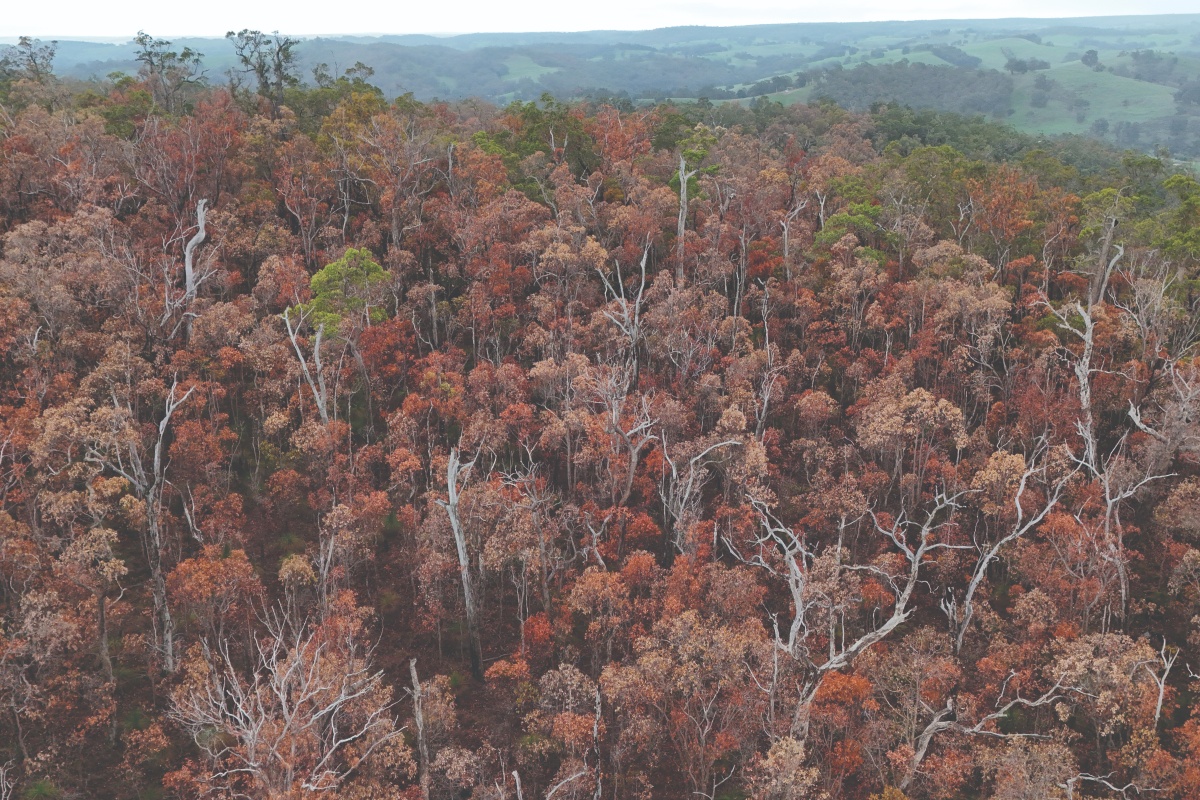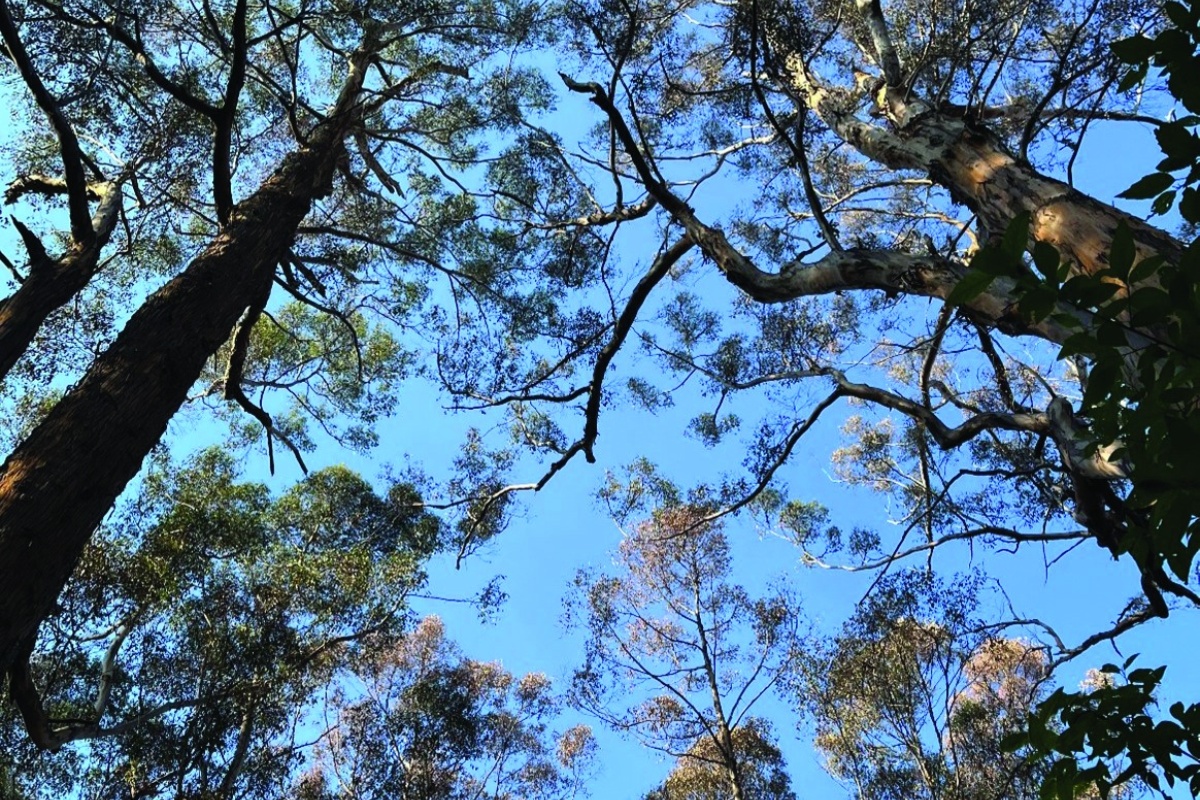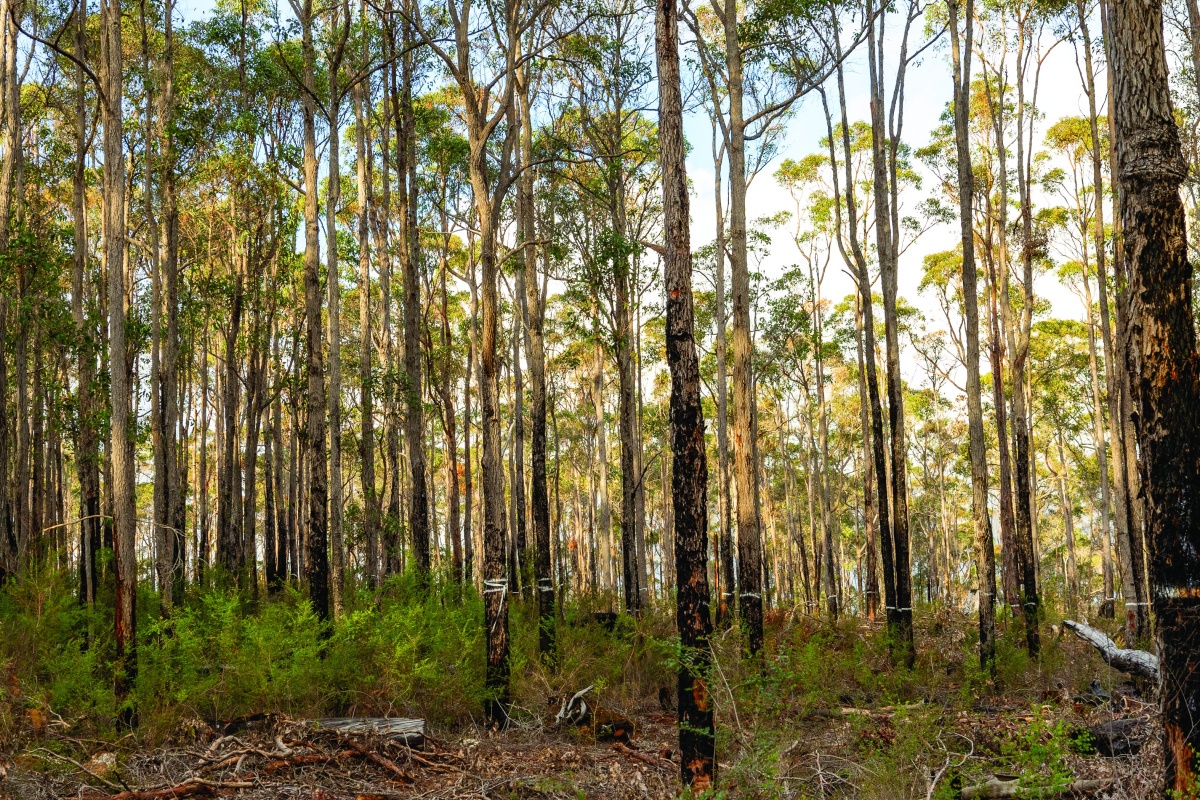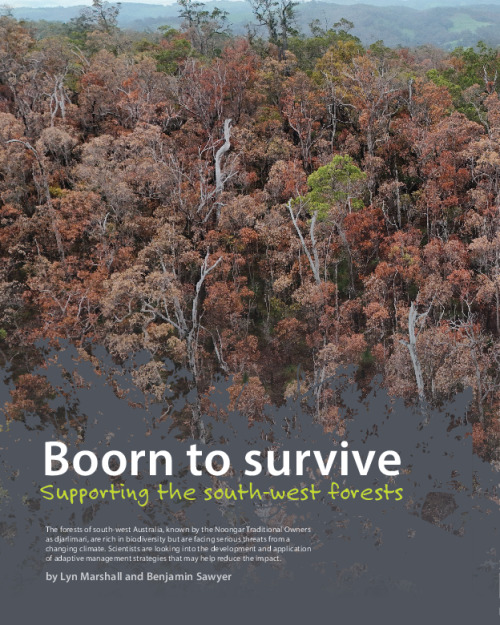Australia’s south-west djarlimari (forests) are the traditional lands of the Noongar peoples and are a subset of the Southwest Australian Floristic Region (SWAFR)—a globally recognised biodiversity hotspot, which also includes areas of Yamatji country. Biodiversity hotspots are so named because they are both biologically rich and yet deeply threatened.
Although their intact habitat represents just 2.5 per cent of the world’s land surface, these hotspots support more than half of the world’s plant species and nearly 43 per cent of bird, mammal, reptile and amphibian species are endemic to these areas (found nowhere else in the world). Recent study has identified 8379 native vascular plant species and subspecies occur in the SWAFR. Southwest djarlimari support more than 3750 plant species and subspecies—a remarkable richness considering the limited topographic and climatic variation across the region.
South-west djarlimari are the focus of the Forest Management Plan 2024–2033 and sit in an ancient, weathered landscape of low nutrient soils that has remained geologically undisturbed for tens of millions of years. This stability and low nutrient status allowed plant species to evolve without major extinctions seen elsewhere in the world and develop diverse traits that promote survival in fireprone, infertile habitats. These evolutionary traits include a variety of strategies to withstand the long dry spells that are common to this part of the world, such as specialised root systems to maximise uptake of water and nutrients, and leaf morphology that minimises loss of moisture to transpiration.
CHALLENGING CLIMATE
Bureau of Meteorology (BOM) research has identified that since the 1970s fewer and weaker cold fronts and low pressure systems crossed the southwest region during the cooler winter months, while high pressure systems and associated warm, sunny dry days were stronger and more frequent. This is particularly problematic for the southwest djarlimari as winter cold fronts and lows are the primary source of rainfall. The latest climate projections from the Intergovernmental Panel on Climate Change agree the one region in the world where most of the models concur on the magnitude of rainfall changes and where signs of climate impacts are already evident is south-west Western Australia.
Evidence from sequencing DNA indicate the dominant overstorey boorn (trees) of south-west djarlimari (Eucalyptus and Corymbia) dates back to Gondwanan times when Australia was still connected to Antarctica and typifies the survival mechanisms adapted by plant species to their environment over the subsequent eons. Boorn play a crucial ecological role in water, nutrient and carbon dioxide cycles. They also support biodiversity in their own right by providing habitat to an incredible array of plant, animal and fungi species, many of which have their own survival strategies based on their relationship with boorn.
These south-west boorn species demonstrate high levels of resilience by readily re-sprouting from lignotubers or epicormic buds beneath the bark following disturbances such as fire, and have adapted to limited rainfall over the summer months by accessing ground water stores.
PUSHING THE LIMITS
However, despite this suite of remarkable adaptations, reducing annual rainfall and increasing depth to groundwater, higher mean temperatures, extreme temperature events and prolonged drought are causing physiological challenges that can push boorn to a threshold beyond where they are able to survive. Studies of global ecology changes suggest that the speed at which plants succumb, and the nature of the impacts, can be rapid and abrupt. Even minor reductions in average rainfall have been observed to result in significant increases in the frequency and severity of drought events.
Higher temperatures amplify the effects of drought, weaken trees and reduce their defences to stressors such as disease and pests, which have been shown to thrive in warmer conditions. Drier, hotter conditions also increase the likelihood and occurrence of high intensity bushfires to which forests have lower resistance.
In early 2011, following an acute drought and series of heatwaves, approximately 16,000 hectares of forest experienced die-off in patches across the Northern Jarrah Forest. In these areas, the death of mature boorn affected the djarlimari canopy, changing the overall forest structure that in turn affected associated animal and fungal species.
Another significant vegetation die-off event began in February 2024 in the djarraly (Eucalyptus marginata – jarrah) and kari (Eucalyptus diversicolor – karri) djarilmari following the 2023/24 protracted hot and dry summer.
Increasing die-off is predicted to occur as the climate in south-west WA continues to warm and dry. Enhancing our understanding of such events could allow improved responses in the future.
LOOKING FOR ANSWERS
The Department of Biodiversity, Conservation and Attractions (DBCA), in collaboration with Murdoch University and other university partners, are conducting fieldwork following the 2011 and more recent events. Scientists and forest managers are using a range of techniques including remote sensing and satellite data to determine the location, severity and size of die-off patches, the vegetation types and species affected (and those unaffected), and susceptible site characteristics including geology and soils.
Field and laboratory research continues with the intent to better understand the ecophysiology of key species and in particular, their water use strategies, drought tolerance, ability to recover from drought, and critical thresholds of water availability and heat likely to cause plant deaths. By understanding the common and unique characteristics of die-off sites within a vegetation community, ecologists and land managers like DBCA may anticipate future events, target research and produce vulnerability maps that predict how djarilmari might be impacted. This also enables the development and application of adaptive management strategies that may help reduce the impact of die-off events in certain circumstances.
REDUCING STRESS
Once such adaptive management approach being implemented under the Forest Management Plan 2024–2033 is the application of ecological thinning (selectively removing smaller stems from an area) to areas identified as vulnerable to water stress due the impacts of climate change.
Many forest stands in south-west djarlimari consist of young over-dense tree populations as a result of past regenerative forest management practices. The high water demand of these stands makes them particularly vulnerable to increased temperatures and drought events.
Although djarraly and kari djarlimari have self-thinning tendencies, this process has been shown to be slow and cannot occur quickly enough to relieve water stress (by naturally reducing the number of trees) in an increasingly warming and drying climate. Ecological thinning (selectively removing smaller trees from an area) can reduce moisture stress to mitigate the effect of climate-induced impacts on our boorn and forest ecology.
Boorn remaining after ecological thinning are anticipated to become healthier and stronger and better able to resist the interaction of threats such as less available groundwater, disease, weeds and bushfire. They will also provide ecological benefits as they grow to maturity, such as providing habitat hollows and greater storage of carbon.
WHAT’S NEXT
Evaluating and learning from the forest’s response to events such as the 2011 and 2024 die-off informs management approaches to improve forest health and resilience. Analysis of these events, and the abiotic and biotic contributing factors, is being incorporated into selection of forest enhancement areas (those areas in which ecological thinning is planned and undertaken) and ecological thinning processes.
Managing south-west forests into an uncertain future is a challenge. Research and contemporary management actions seek to support the boorn and protect the flora and fauna of the south-west djarlimari.
The forests of south-west Australia, known by the local Aboriginal people as djarlimari, are rich in biodiversity but are facing serious threats from a changing climate. Scientists are looking into the development and application of adaptive management strategies that may help reduce the impact.
Author box
Lyn Marshall is a project officer with DBCA’s Wildlife Protection Branch and worked on the development of the Forest Management Plan. She can be contacted at lyn.marshall@dbca.wa.gov.au or (08) 9219 9956.
Benjamin Sawyer is coordinator of the Forest Management Plan with DBCA’s Conservation and Ecosystem Management Division. He can be contacted at ben.sawyer@dbca.wa.gov.au



